Abstract
A multiple inert gas elimination method was used to study the mechanism of impaired gas exchange in 23 patients with advanced chronic obstructive pulmonary disease (COPD). Three patterns of ventilation-perfusion (Va/Q) inequality were found: (a) A pattern with considerable regions of high (greater than 3) VA/Q, none of low (less than 0.1) VA/Q, and essentially no shunt. Almost all patients with type A COPD showed this pattern, and it was also seen in some patients with type B. (b) A pattern with large amounts of low but almost none of high VA/Q, and essentially no shunt. This pattern was found in 4 of 12 type B patients and 1 of type A. (c) A pattern with both low and high VA/Q areas was found in the remaining 6 patients. Distributions with high VA/Q areas occurred mostly in patients with greatly increased compliance and may represent loss of blood-glow due to alveolar wall destruction. Similarly, well-defined modes of low VA/Q areas were seen mostly in patients with severe cough and sputum and may be due to reduced ventilation secondary to mechanical airways obstruction or distortion. There was little change in the VA/Q distributions on exercise or on breathing 100% O2. The observed patterns of VA/Q inequality and shunt accounted for all of the hypoxemia at rest and during exercise. There was therefore no evidence for hypoxemia caused by diffusion impairment. Patients with similar arterial blood gases often had dissimilar VA/Q patterns. As a consequence the pattern of VA/Q inequality could not necessarily be inferred from the arterial PO2 and PCO2.
Full text
PDF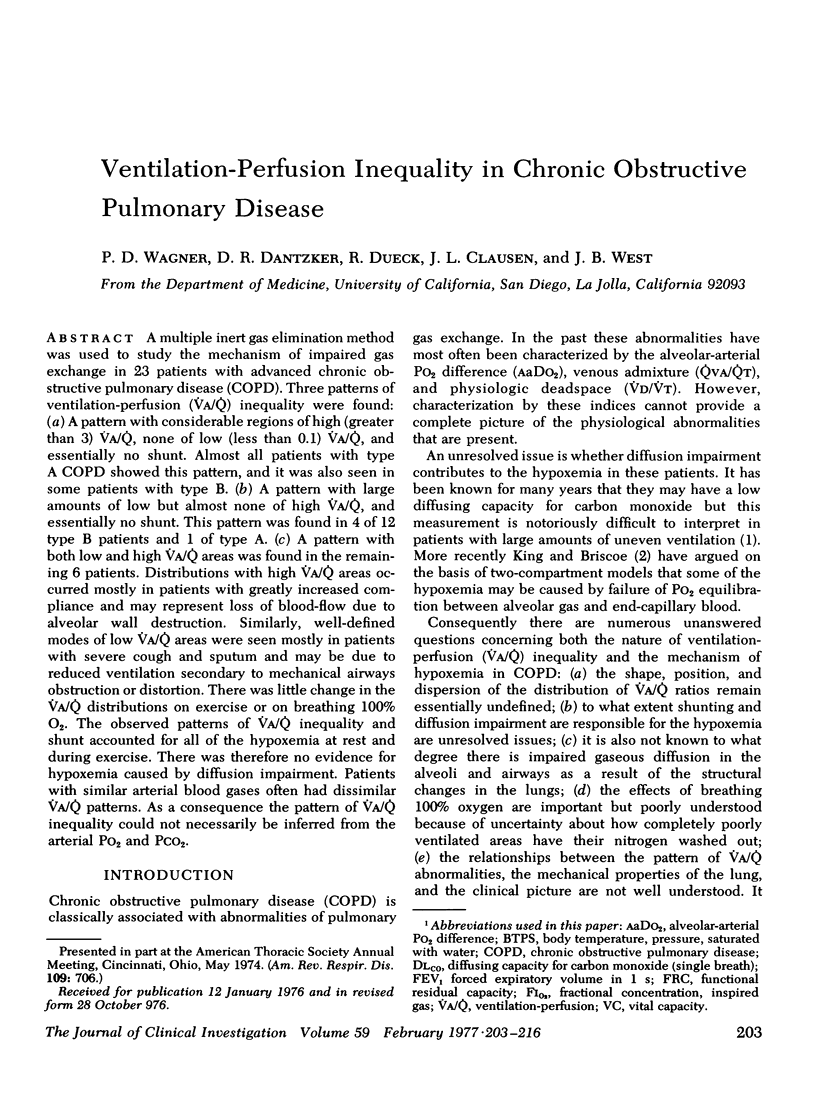
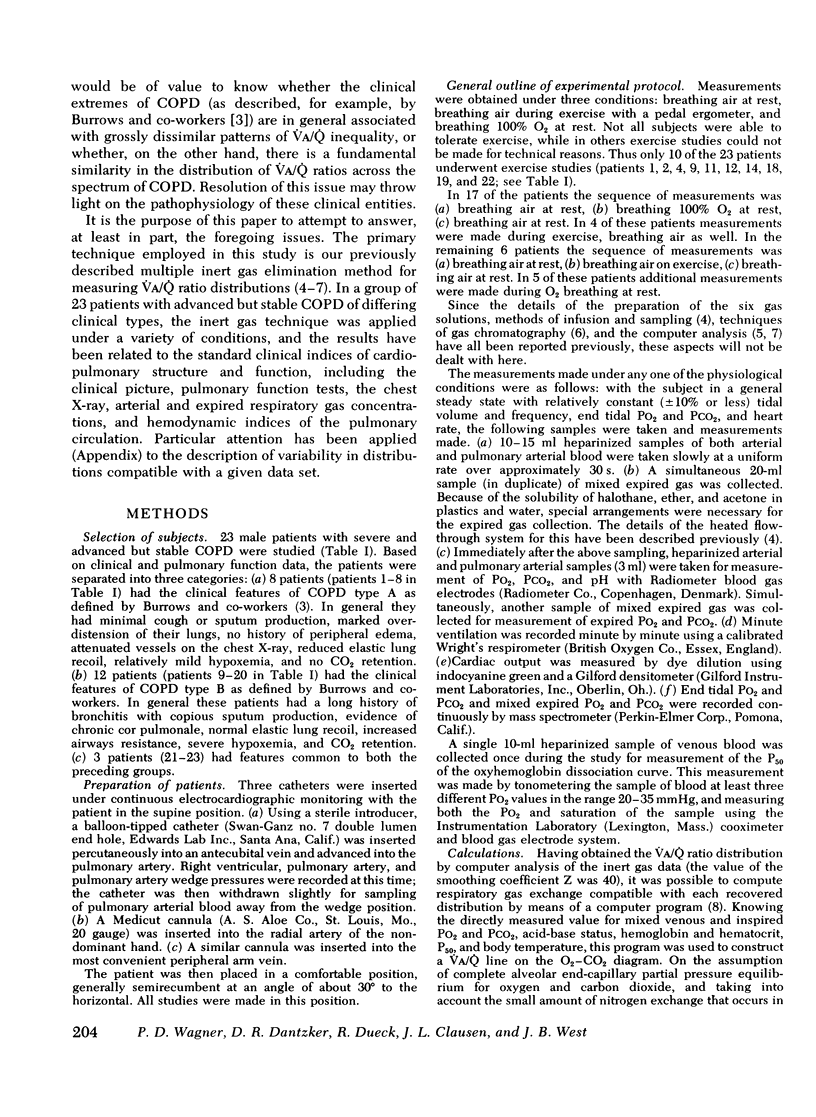
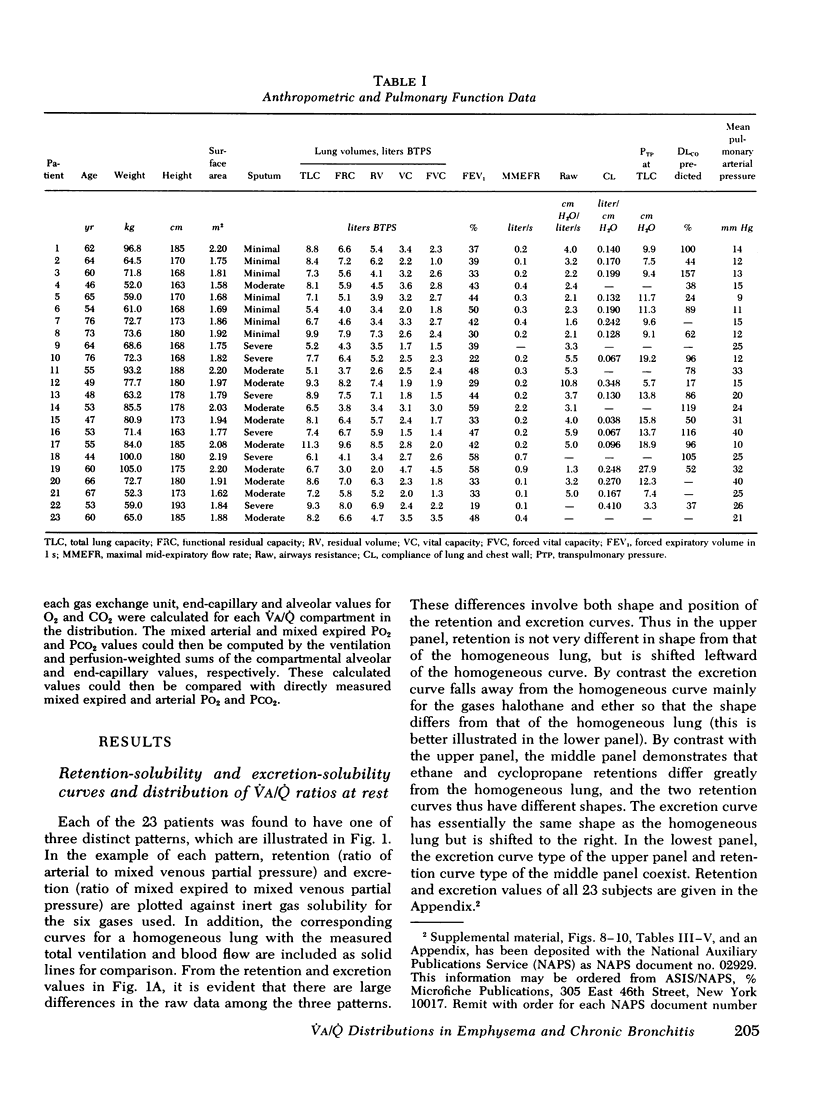
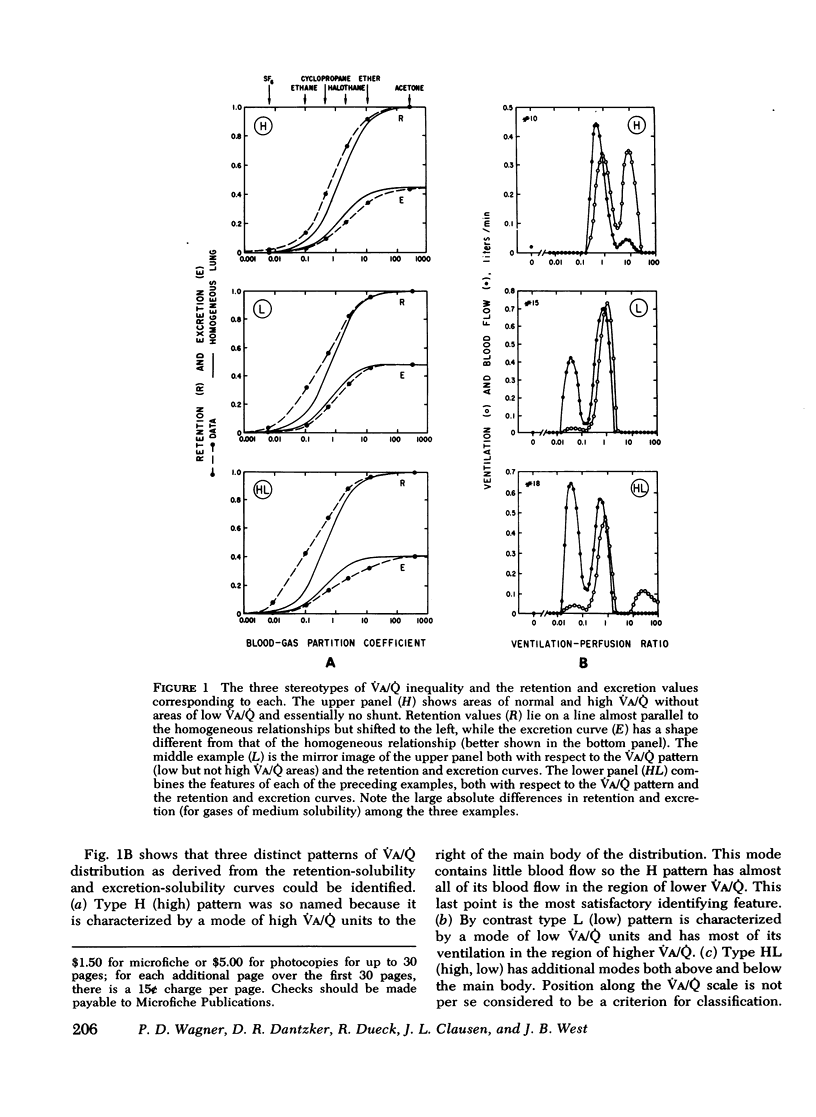
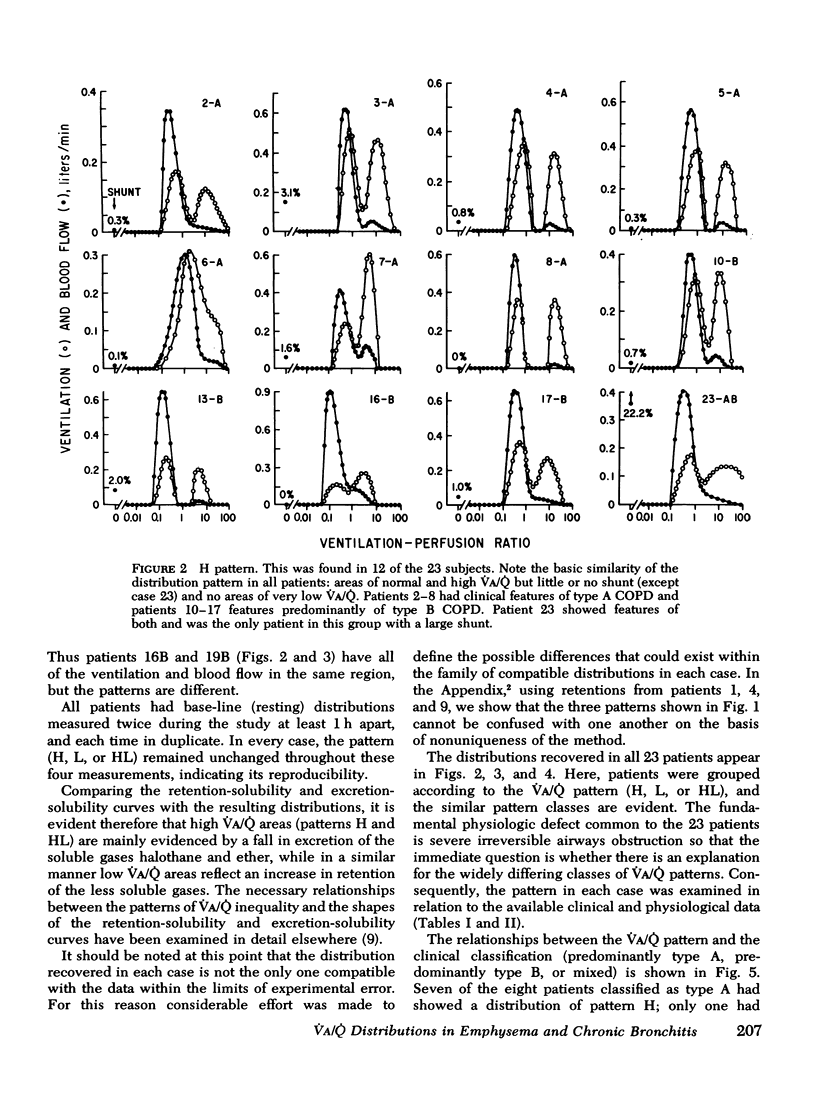
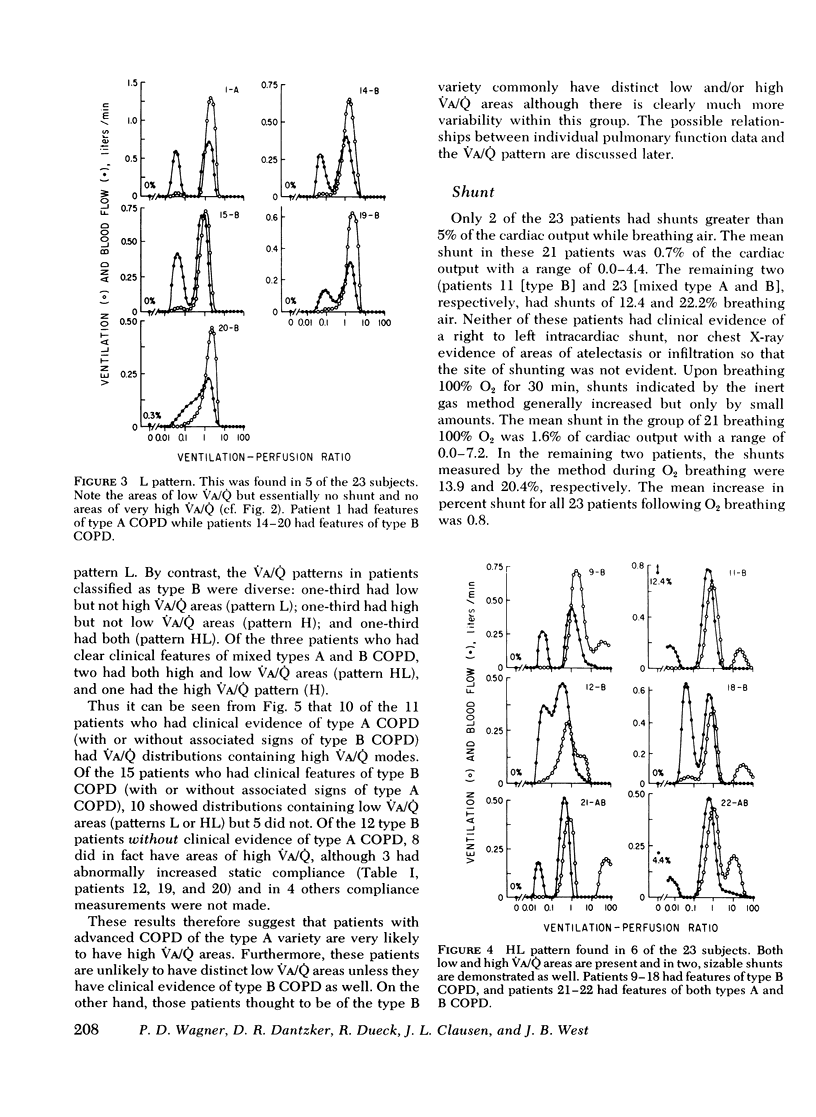
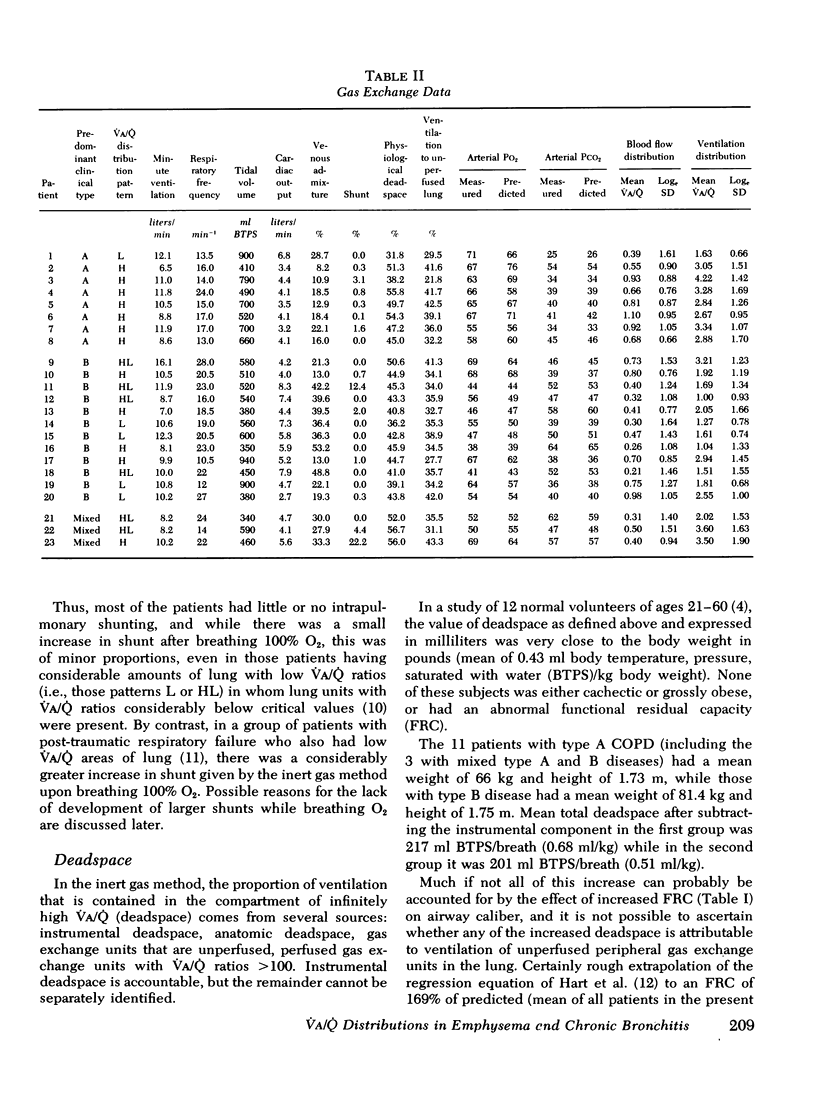
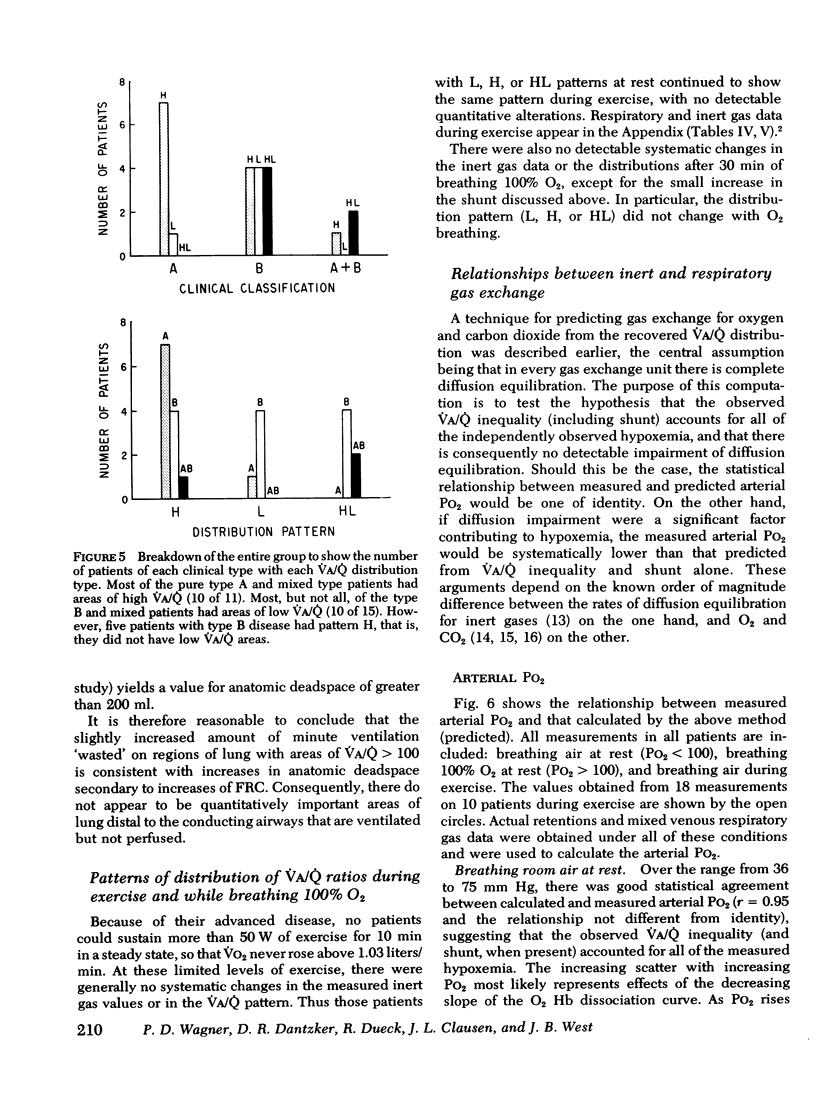
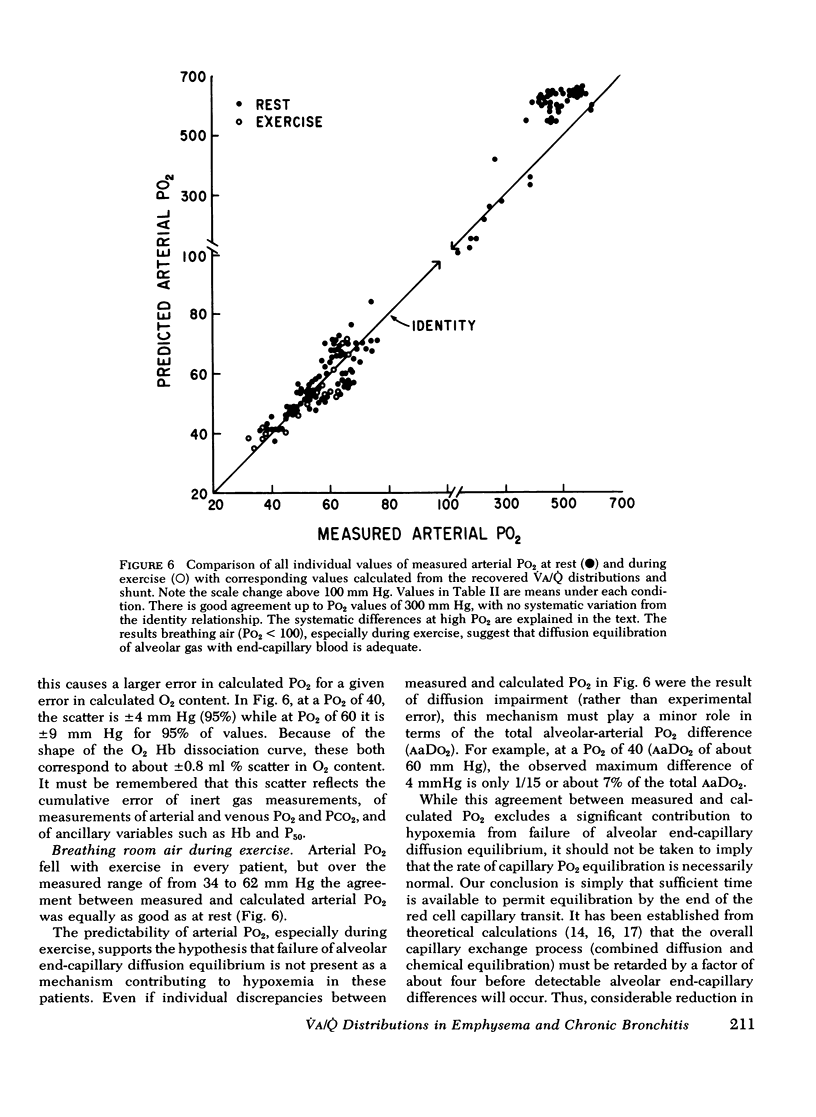
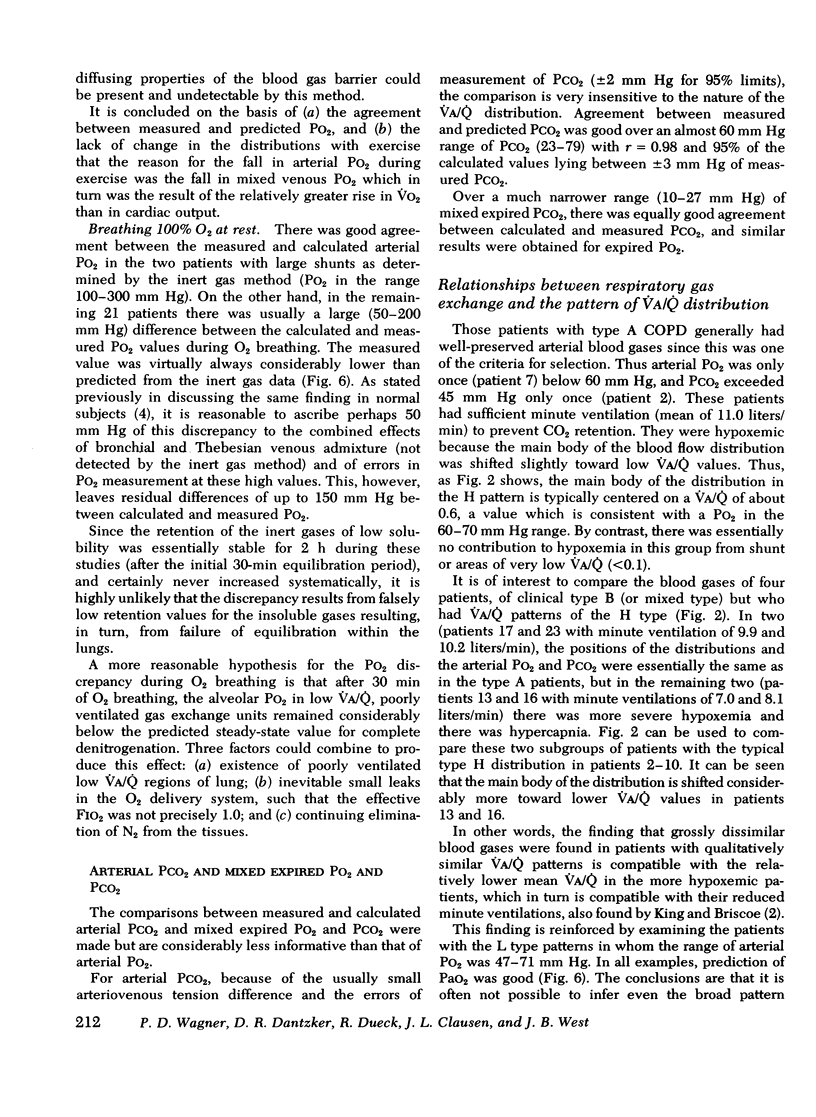
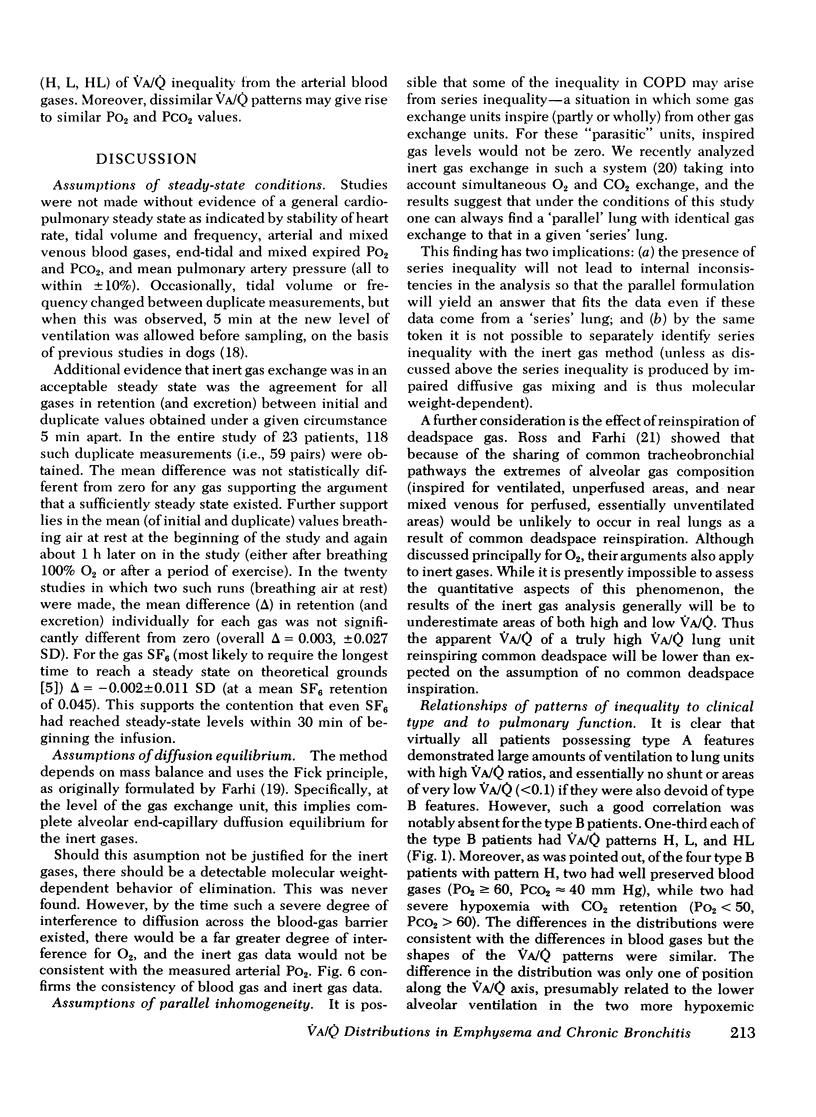
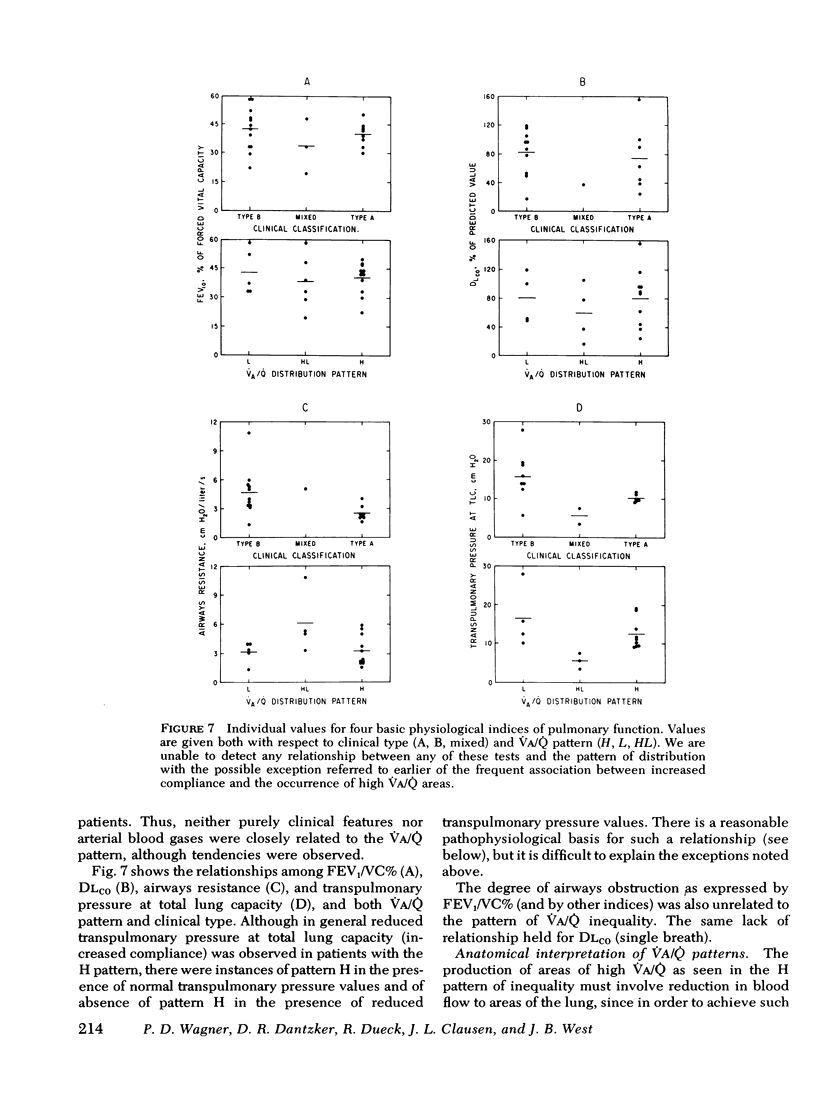
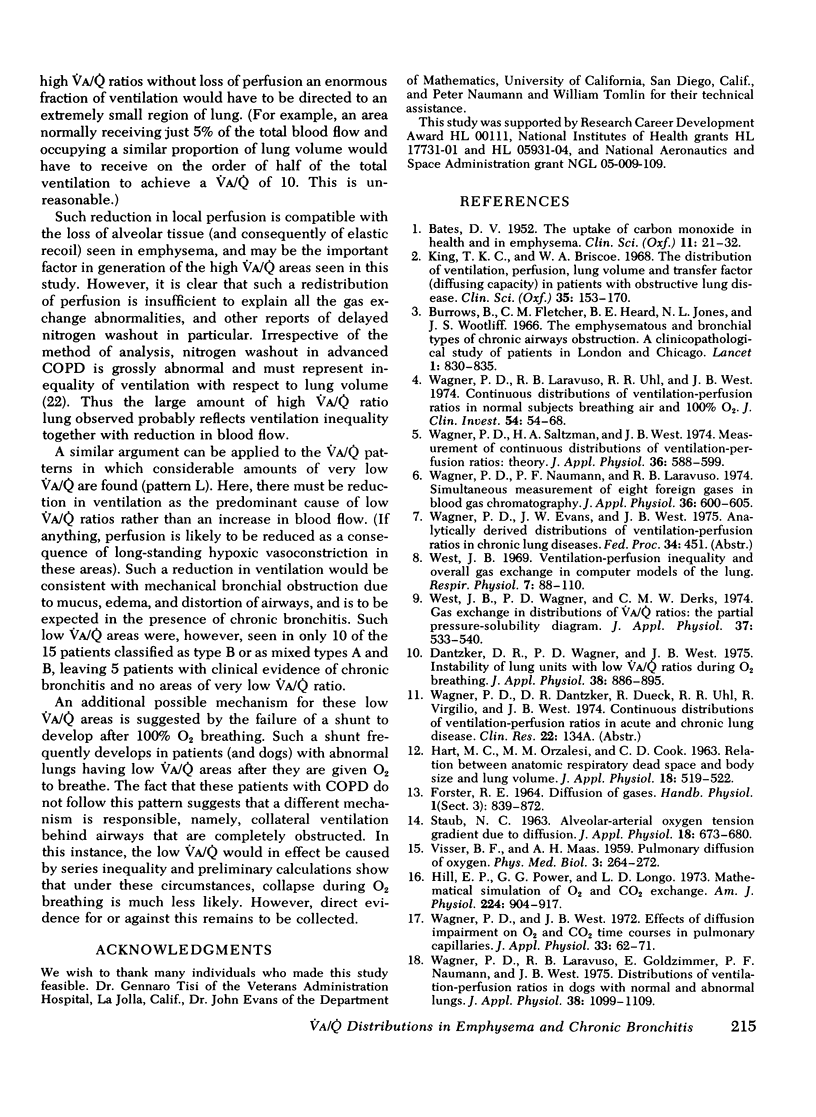
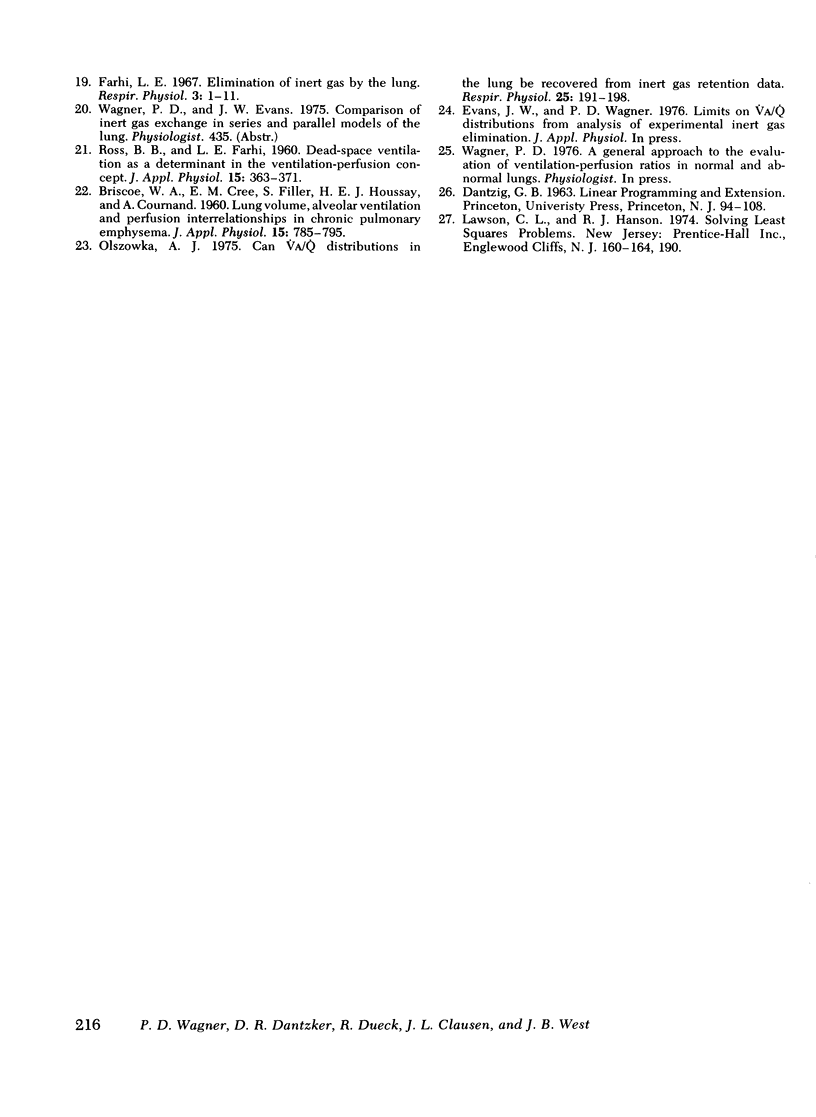
Selected References
These references are in PubMed. This may not be the complete list of references from this article.
- BATES D. V. The uptake of carbon monoxide in health and in emphysema. Clin Sci. 1952 Feb;11(1):21–32. [PubMed] [Google Scholar]
- Burrows B., Fletcher C. M., Heard B. E., Jones N. L., Wootliff J. S. The emphysematous and bronchial types of chronic airways obstruction. A clinicopathological study of patients in London and Chicago. Lancet. 1966 Apr 16;1(7442):830–835. doi: 10.1016/s0140-6736(66)90181-4. [DOI] [PubMed] [Google Scholar]
- Farhi L. E. Elimination of inert gas by the lung. Respir Physiol. 1967 Aug;3(1):1–11. doi: 10.1016/0034-5687(67)90018-7. [DOI] [PubMed] [Google Scholar]
- Hill E. P., Power G. G., Longo L. D. Mathematical simulation of pulmonary O 2 and CO 2 exchange. Am J Physiol. 1973 Apr;224(4):904–917. doi: 10.1152/ajplegacy.1973.224.4.904. [DOI] [PubMed] [Google Scholar]
- King T. K., Briscoe W. A. The distribution of ventilation, perfusion, lung volume and transfer factor (diffusing capacity) in patients with obstructive lung disease. Clin Sci. 1968 Aug;35(1):153–170. [PubMed] [Google Scholar]
- Olszowka A. J. Can VA/Q distributions in the lung be recovered from inert gas retention data? Respir Physiol. 1975 Nov;25(2):191–198. doi: 10.1016/0034-5687(75)90096-1. [DOI] [PubMed] [Google Scholar]
- ROSS B. B., FARHI L. E. Dead-space ventilation as a determinant in the ventilation-perfusion concept. J Appl Physiol. 1960 May;15:363–371. doi: 10.1152/jappl.1960.15.3.363. [DOI] [PubMed] [Google Scholar]
- STAUB N. C. Alveolar-arterial oxygen tension gradient due to diffusion. J Appl Physiol. 1963 Jul;18:673–680. doi: 10.1152/jappl.1963.18.4.673. [DOI] [PubMed] [Google Scholar]
- VISSER B. F., MAAS A. H. [Pulmonary diffusion of oxygen]. Phys Med Biol. 1959 Jan;3(3):264–272. doi: 10.1088/0031-9155/3/3/306. [DOI] [PubMed] [Google Scholar]
- Wagner P. D., Laravuso R. B., Goldzimmer E., Naumann P. F., West J. B. Distribution of ventilation-perfusion ratios in dogs with normal and abnormal lungs. J Appl Physiol. 1975 Jun;38(6):1099–1109. doi: 10.1152/jappl.1975.38.6.1099. [DOI] [PubMed] [Google Scholar]
- Wagner P. D., Laravuso R. B., Uhl R. R., West J. B. Continuous distributions of ventilation-perfusion ratios in normal subjects breathing air and 100 per cent O2. J Clin Invest. 1974 Jul;54(1):54–68. doi: 10.1172/JCI107750. [DOI] [PMC free article] [PubMed] [Google Scholar]
- Wagner P. D., Naumann P. F., Laravuso R. B. Simultaneous measurement of eight foreign gases in blood by gas chromatography. J Appl Physiol. 1974 May;36(5):600–605. doi: 10.1152/jappl.1974.36.5.600. [DOI] [PubMed] [Google Scholar]
- Wagner P. D., Saltzman H. A., West J. B. Measurement of continuous distributions of ventilation-perfusion ratios: theory. J Appl Physiol. 1974 May;36(5):588–599. doi: 10.1152/jappl.1974.36.5.588. [DOI] [PubMed] [Google Scholar]
- Wagner P. D., West J. B. Effects of diffusion impairment on O 2 and CO 2 time courses in pulmonary capillaries. J Appl Physiol. 1972 Jul;33(1):62–71. doi: 10.1152/jappl.1972.33.1.62. [DOI] [PubMed] [Google Scholar]
- West J. B. Ventilation-perfusion inequality and overall gas exchange in computer models of the lung. Respir Physiol. 1969 Jun;7(1):88–110. doi: 10.1016/0034-5687(69)90071-1. [DOI] [PubMed] [Google Scholar]
- West J. B., Wagner P. D., Derks C. M. Gas exchange in distributions of VA-Q ratios: partial pressure-solubility diagram. J Appl Physiol. 1974 Oct;37(4):533–540. doi: 10.1152/jappl.1974.37.4.533. [DOI] [PubMed] [Google Scholar]


